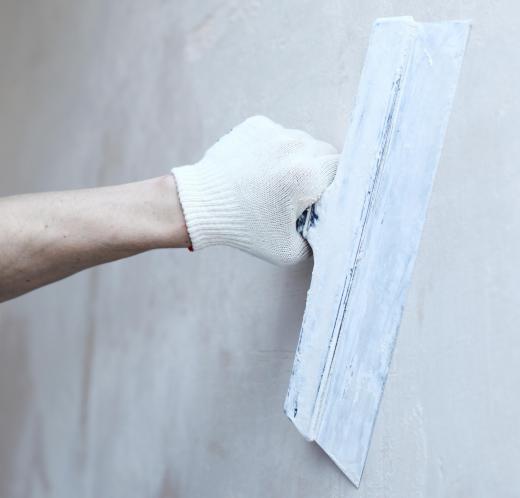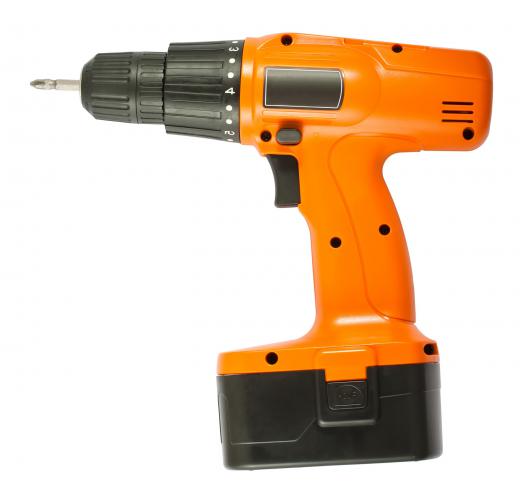From automatic devices to handheld equipment, a wide variety of sheetrock tools are available in the marketplace to assist professionals and novices alike with sheetrock installation. Simple jobs, like repairing minor holes in sheetrock, generally require basic drywall tools such as drywall hammers, taping knives, and tape measures. A complete drywall installation, on the other hand, can require more specialized drywall equipment like a power drill, a t-square, and a banjo taper. Higher-quality sheetrock tools often lead to the best long-term results, even though they may require a more costly initial investment.
Basic sheetrock tools include a drywall hammer, a tape measure, and a saw to cut sheetrock to size or to carve out holes for light switches or electric outlets. In general, these tools are always crucial, even for small sheetrock repair jobs. Another indispensable piece of equipment is a utility razor knife, which is usually used to cut the drywall face paper to the correct size.

Taping knives and joint knives are other basic sheetrock tools. Taping knives usually come in six or eight inch sizes (about 15-20cm) while joint knives are generally ten inches (about 25 cm) in length. Using a taping knife, a drywall finisher can fill in tape joints in corners and seams. Generally, joint knives are used to apply multiple layers of finishing mud over flat seams. A joint knife may also be used to get rid of surplus sheetrock.

Other sheetrock tools that are important include a drywall mud pan, a pole sander, and sponge sanding blocks. Pole sanders and sponge sanding blocks can be used to sand joint compound that has been applied to sheetrock. While not essential, a foot-operated drywall lifter can prove helpful, particularly for large jobs. Drywall lifters are sheetrock tools that simplify the process of tightly fitting one piece of sheetrock up against another piece.

Professional sheetrock finishers often use power drills, t-squares, and aluminum drywall-tape banjos when completing a project. A power drill makes it easier for a drywall installer to mix sheetrock mud. A t-square is a type of drawing instrument that allows a drywall installer to draw lines for cutting sheetrock. Banjo tapers are used to apply sheetrock tape and mud in one step, often saving a significant amount of time.
Some professionals use screw guns instead of drywall hammers and nails because screw guns can be more consistent. After sheetrock has been hung, a hand-held router tool is sometimes used to carve out electrical outlets, doors, and windows. Drywall stilts may also be used, although they can be tough for amateurs to manage.
